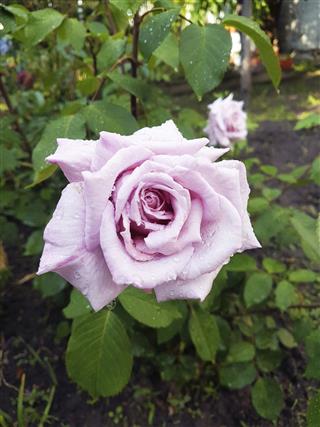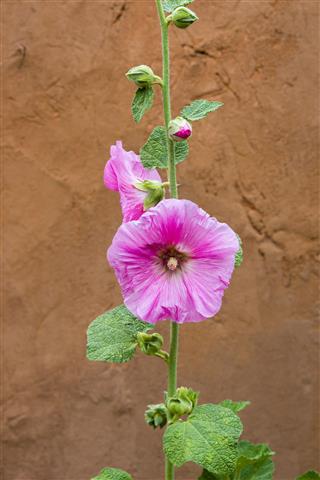
Of the different artificial vegetative propagation techniques used to propagate plants in horticulture, grafting is the oldest and simplest method that can be used for a variety of plants.
But he that dares not grasp the thorn should never crave the rose. ~ Anne Bronte
A rose is every gardeners favorite. It takes a lot of grooming, a lot of care (as the above quote may have illustrated)… but ah! The sight of a rose plant in full bloom is one that is sure to take your breath away! Roses, along with needing a lot of attention and pampering, also need a lot of practice while growing. Roses also offer very nice grafting opportunities.
Grafting is the technique in which a plant is propagated by fusing a stem-cutting from that plant with the stem of a rooted plant. The grafted plant is called the ‘scion’, while the rooted plant onto which the graft is grafted is called the ‘rootstock’, or simply the ‘stock’. There are many advantages of grafting plants. However, hobby gardeners indulge in grafting more for the creative satisfaction rather than the science of it. The result of a successful grafting attempt is that the plant may bear flowers of two different colors, sometimes even of mixed colors!
Grafting is a science, yes; it is a horticulture technique. But it is also an art. Not everybody who knows the technique of grafting plants is able to successfully graft plants. Only the most skilled and efficient gardeners can do it! Like I said before, a successfully grafted plant may bear flowers of two different colors. This, in a rose plant, is a very enchanting sight! Rose plants are hence a favorite among people who like to do grafting as well.
Grafting Rose Plants
There are several different types of grafting methods that have been devised for artificial vegetative propagation of plants. However, the grafting methods most commonly used for rose plants are whip grafting and bud grafting methods. Each can be used quite conveniently, as you will find out when you read further…
Whip Grafting

[Suitable for: Full-grown land or potted rose plant. Diameter of the stock and the scion should be 1 inch or less.]
Whip grafting is probably the easiest and the most common method of grafting small plants. If this is your first try at grafting, I would suggest you to begin with this method as it is very easy. To whip-graft your rose plant, follow these steps –
1. Make a slanting cut on the stock plant.
2. The scion for whip grafting is a branch with at least two vegetative buds and a few leaves. Make a similar but complementary slanting cut on the scion.
3. Make sure the cambium of both the scion and the stock is intact (the cambium fuses to form a ‘living-tissue bridge’ in the form of a callus).
4. Carefully place the scion on the stock plant and apply some grafting wax (resin and beeswax in 3:1 ratio, or you can buy it).
5. Tie the scion in place by first wrapping it in a perforated polythene strip, and then secure it with a rope. Do not secure it so tightly that the graft cannot even ‘breathe’. Let it not be so loose either that the arrangement falls apart.
Union: The graft fuses in about one and a half to two months. To check if your scion has grafted with the stock, carefully unwrap the graft and check. It is best to leave the graft untouched for at least two and a half months though – that way the scion will have sure grafted with the stock when you check it. If the arrangement is disturbed in the process, it may fail to fuse.
Bud Grafting
[Suitable for: Small potted rose plants or nursery rose plants with thin branches]
Bud grafting is done when the stock is delicate and has a diameter of about 1cm. In such a case, grafting an entire branch on the stock becomes difficult, as the branch may dry up or wilt before it fuses. Also, if the stock has thin branches, then the whole arrangement becomes too delicate to graft successfully. In such a case, bud grafting (or simply ‘budding’) may be done. Here, the scion is a vegetative bud. Depending on the cut made on the stock, budding can be of two types. Both the types and their procedures are explained below.

Patch Bud Grafting – Here, a patch from the stock plant is removed, so as to make a place for the bud to fuse. While making the patch-cut on the stock it is essential to take care that the stock is not wounded to such an extent that it is unable to heal. Make a patch-cut that is not too deep. Simply expose the inner part of the stem. The steps for propagating a rose plant by patch budding are –
1. Cut a vegetative bud from the plant you want to graft – this will serve as the scion. Make sure you cut a little bit of the stem along with the bud and do not simply nip the bud from the tree.
2. Make a patch-cut of corresponding shape and size on the stock. The scion for budding is very small (simply a vegetative bud), so make sure the patch-cut is made such that it will be a snug fit for the scion.
3. Carefully place the scion on the stock plant and apply some grafting wax.
4. Secure the scion in place as explained before. Take special care while securing a bud graft as the scion is just a vegetative bud and hence quite tiny. It may fall off if not secured properly. Be vigilant and keep your eyes open!
Union: It is easier to monitor the fusion of a bud graft. The vegetative bud grows and develops into a branch after the graft has fused with the stock properly. Hence you do not have to ‘open’ the graft to check for fusion. You will know your attempt has been successful when you see a branch growing out of the graft! This is beneficial as the graft is less vulnerable to prying at the hands of an over-enthusiastic gardener! (Just kidding…!)

T-bud Grafting – Here, a ‘T’-shaped cut is made on the stock plant, such that the flaps can be partially peeled away from the stock. The benefit of T-budding is that, since a ‘T’-shaped cut is made, a small pocket is created on the stock and the scion can be comfortably inserted into the pocket. The arrangement of the graft is hence more secure. T-budding can be done as follows –
1. Cut a vegetative bud from the plant you want to graft, taking similar care as explained before.
2. Make a ‘T’-shaped cut on the stock. Carefully grab the two ends of the ‘T’ with a pair of forceps and peel them away from the stock to expose the inner part of the stem. However, do not completely peel them off the stock. (You can see in the figure how the cut looks after it is ready for grafting – it will give you an idea of how the cut is to be made.)
3. Insert the scion into the ‘T’-shaped cut such that the bud comes out from the cut and is not concealed by the flaps.
4. Apply some grafting wax. Close the flaps and secure the graft as explained before.
Union: Union of a T-bud grafted scion has a better chance than that of a patch bud grafted plant for the simple reason that – the scion is nested safe inside a pocket and is hence less vulnerable to any destructive forces. Monitoring the union is easy (done in the same way as explained before).
Aren’t these some easy ways to graft rose plants? I tried them with my potted roses a couple of years ago – the results had me clicking loads of pictures! It looked fabulous. Let me know how yours turn out to be. Good luck!









